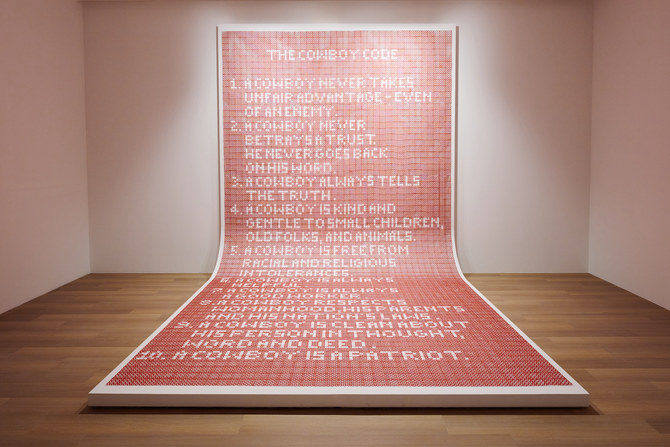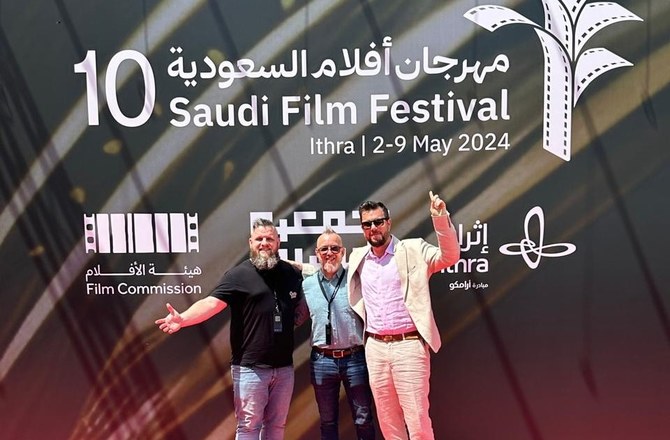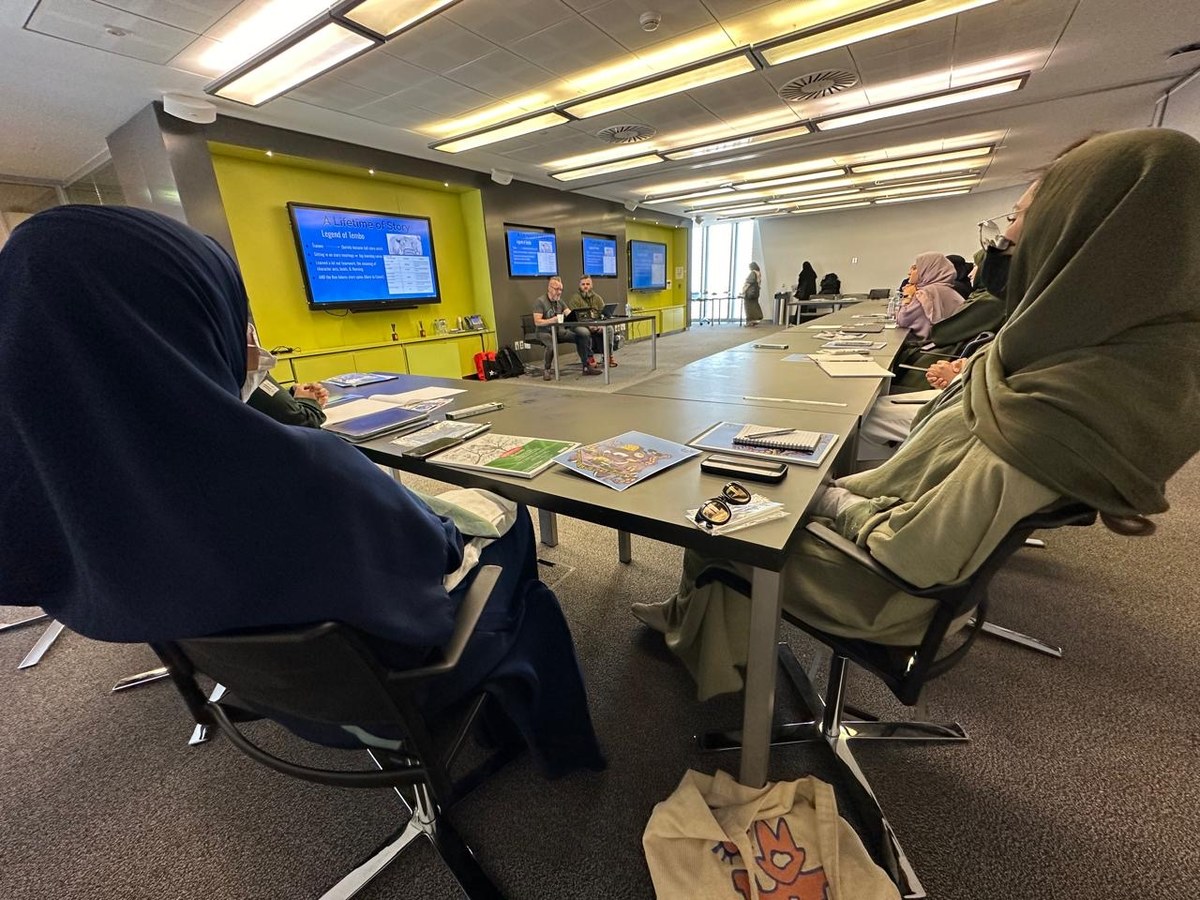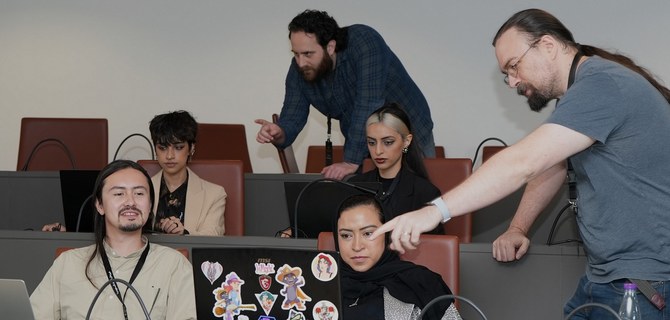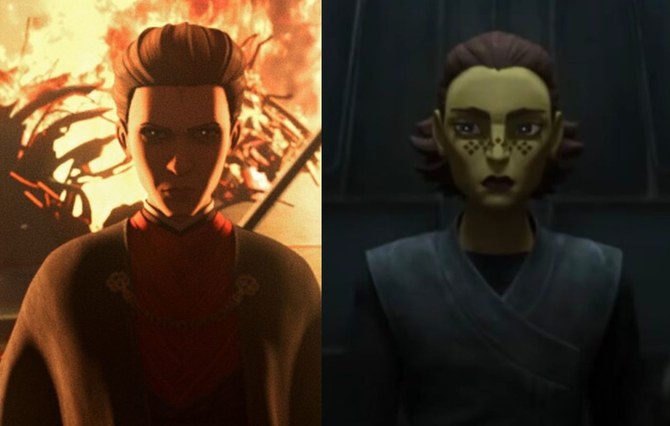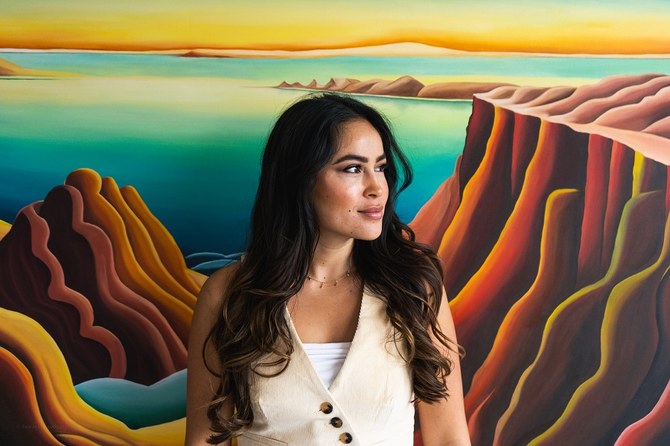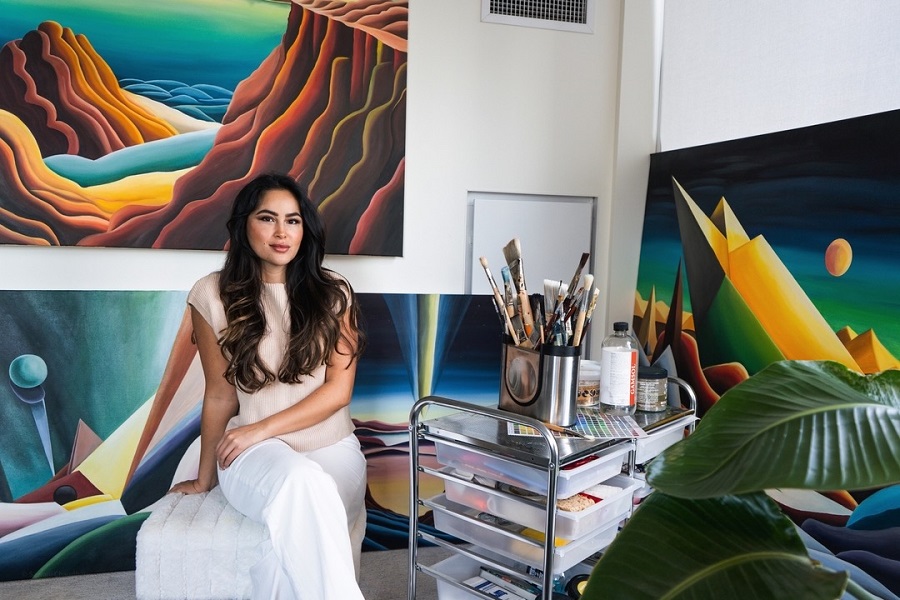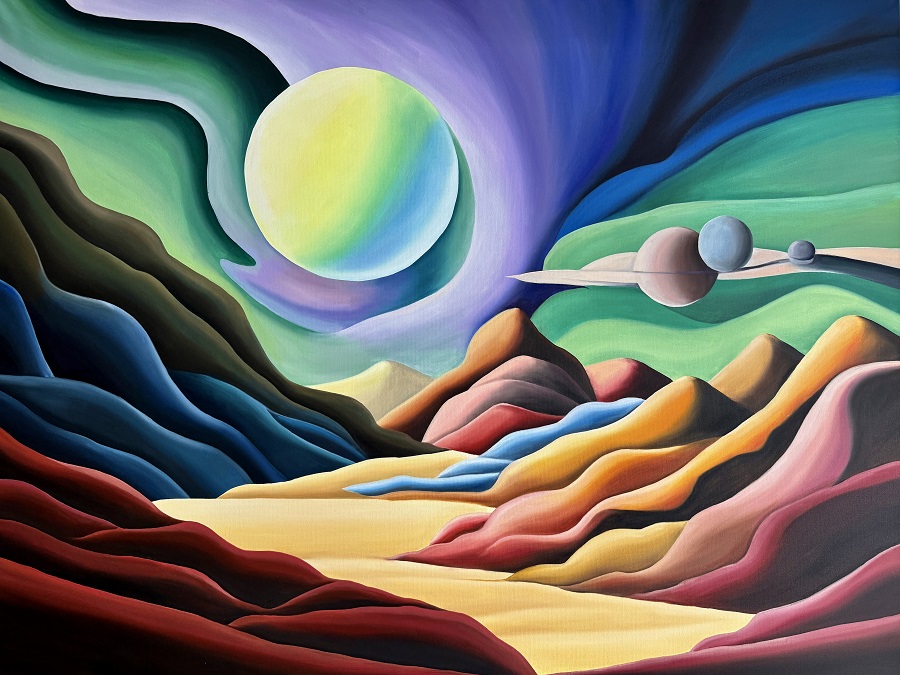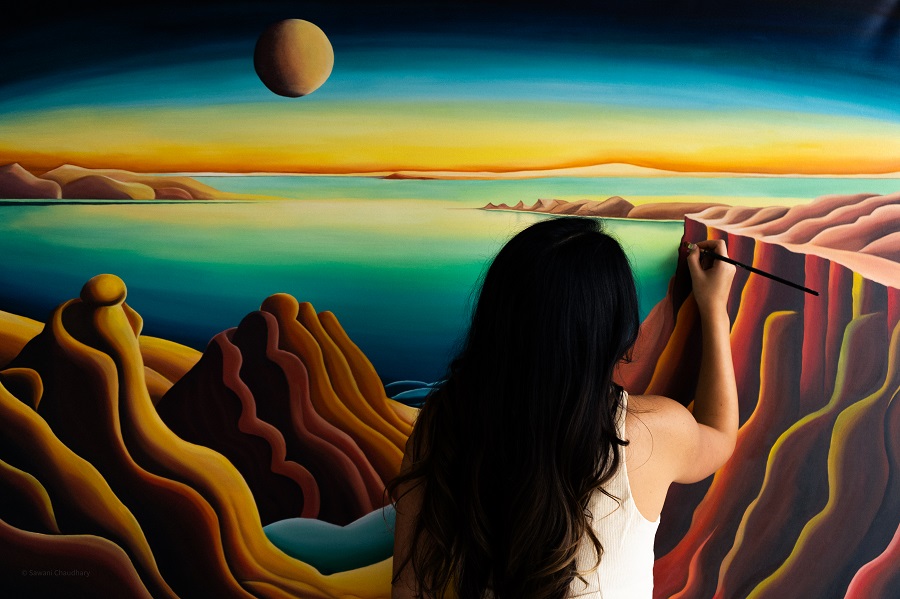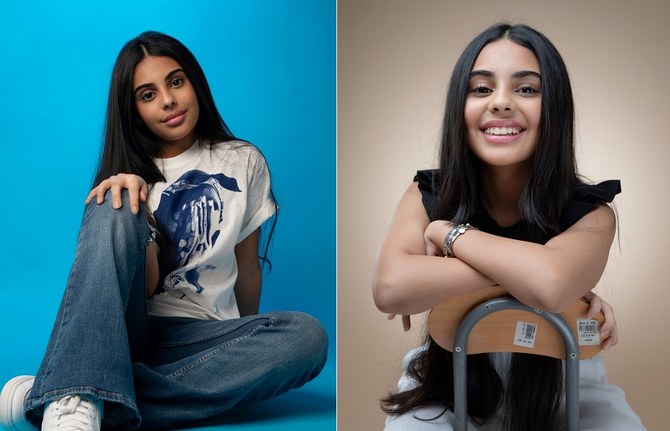ALULA: AlUla’s mirrored Maraya concert hall is currently hosting “More than Meets the Eye,” featuring works from private art collections in Saudi Arabia, some of which are being displayed publicly for the first time.
The show includes work dating back to the 1950s up to the present day, ranging from paintings to films and installations, and exploring themes including identity, poetry and homeland.
“Our aim is to show the importance of collectors in Saudi Arabia and the role they played in the art ecosystem,” the show’s Saudi curator, Dr. Effat Abdullah Fadag, tells Arab News.
Fadag traveled across the Kingdom, meeting the collectors and hearing the stories behind those collections.
“I was very surprised of the amount of people who collected art for different reasons. It was overwhelming,” she says.
One of Fadag’s aims was to bring together Saudi Arabia’s former and current generation of artists, some of whom originally come from other Arab countries, but made a name for themselves in the Kingdom.
“I wanted to present artworks that are in dialogue with each other, rather than segregating them,” she explains. “Their aesthetics are different, but if we look into it, they’re exploring the same issues.”
Here are seven highlights from the show, which runs until April 24.
Abdulhalim Radwi

‘Untitled’ (1978)
The late Makkah-born artist is one of the luminaries of modern Saudi art. He was educated in Rome during the 1960s, making him one of the country’s first artists to study abroad. According to Fadag, after losing his father during childhood, Radwi was raised by his single mother and later had to provide for the family himself.
In this predominantly blue-tuned painting, hailing from the collection of fellow artist Ali Alruzaiza, Radwi constructs an abstract scene of buildings in Makkah, set against a spiral background. “His relationship with Makkah was very important,” notes Fadag.
Ahmed Mater

‘Cowboy Code’ (2012)
Mater hanging work is one of the largest pieces on show. “Cowboy Code” is made of hundreds of red plastic toy gun caps glued together, displaying a 10-point, written manifesto explaining how a cowboy (or a ‘virtuous’ person in general) should behave. “There is a connection to Bedouins and tribes,” says Fadag. “It’s an important work because he is examining foreign cultural influences inside Saudi Arabia.” According to the exhibition catalogue, “the code seems to point to a subversive critique of Western imperialism — a common feature of many of the artist’s artworks.
Ali Alruzaiza

‘Purity’ (2006)
Alruzaiza is a former interior design student and reportedly built his own house. Much of the veteran artist’s work incorporates intricate Saudi architectural motifs. This work for example, made of sand and oil on canvas, showcases geometric designs and floral patterns. According to Fadag, the image has a human element too. “(This) work sheds light on the pivotal role of individuals in the community,” she says. “It serves as a reflection of individuals — particularly the workers who have collaborated closely with Ali. It embodies the purity of their relationships, devoid of ulterior motives, symbolizing the essence of society.”
Fahad Hajailan

‘Untitled’ (2001)
In this dreamy portrait, which has not been exhibited before, Hajailan depicts his wife in dark green and blue tones. Fadag says the image is one of the artist’s “more sensual” pieces, and uses colors that are not typical to his work. “The strength and power of a female figure are expressed here in balance between movement and unity,” according to a statement. “The use of lapiz lazuli ultramarine blue symbolizes water, the sky, or the home of the gods, to position the female figure in a role of power.”
Shadia Alem

‘Supreme Kaaba of God, No. 4’ (2012)
In this extraordinary collage of photographs, the multidisciplinary artist examines the physical changes happening in the city of Makkah. “It shows the conflict between spirituality and modernity,” Alem said in a statement. In the very center of the image stands the Holy Kaaba, surrounded by the windows of houses and imposing cranes.
“I put this work in a particular room of the exhibition, which is about self-development and rebirth. These changes are happening physically, but we are automatically changing on the inside too,” says Fadag.
Muhannad Shono

‘Letters in Light (Lines We Write)’ (2022)
Spirituality, light and shadow are among the key themes of this monochrome work by the Saudi conceptual artist, who previously represented the Kingdom at the Venice Biennale. Here, Shono creates a meditative experience using steel, thread, and light projection.
“The artworks featured in the exhibition present spirituality as an interesting subject that has been touched by artists in the Kingdom, serving as a medium through which artists articulate their inquiries and internal wisdom,” says Fadag. “By exploring the interplay between light and darkness, Muhannad’s artwork carves out spaces that shape our identities, inviting us to reach into our core to gain insight into the external world.”
Adel Al-Quraishi

‘Ateeq, the Bedouin, Desert of Nafud’ (2015)
This striking black-and-white image of an elderly Bedouin man pouring coffee from the traditional Saudi flask with the confidence of a professional barista is typical of Al-Quraishi’s work, much of which involves documenting the people of his homeland, whether in the desert or in a studio setting. According to the exhibition catalogue, Al-Quraishi — born in 1968 — has been an influential figure in Saudi art because “his investment in documenting heritage sites, places and people of Saudi Arabia has shaped the ways in which documentation was introduced within contemporary art practices.”



